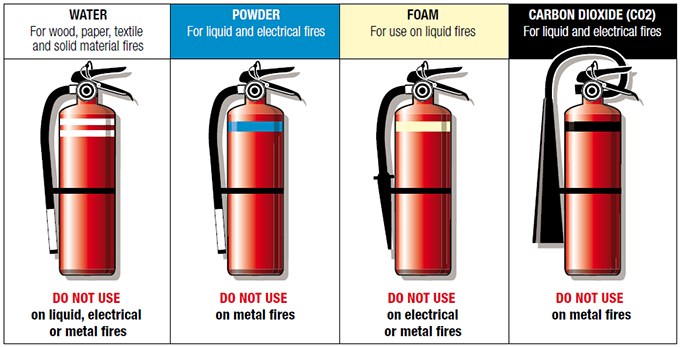
Health and Safety Arrangements
Fire and other Emergency Procedures
In the event of a fire within the unit:
- Raise the alarm to ensure all personnel immediately evacuate the building either through the closest of the two front exits.
- The senior staff member present should take responsibility for initially ensuring:
- All people in the building are instructed to leave the building;
- Delegate or take responsibility for calling the fire emergency service;
- If it is safe for them to do so:
- Check that no one has been left behind on the mezzanine floor, or in the store rooms, kitchen, toilet and shower on the ground floor;
- Switch off the electrical mains and close all doors and windows as you go;
- Decide if the fire can be put out with the fire extinguishers present;
- Take the front door First Aid kept with them as they leave the building;
- Warn the neighbours of the fire.
- All personnel to congregate at the designated Evacuation Assembly Point outside Unit 10. Do not leave the assembly point until you have been accounted for by the senior person present. This is to make sure the emergency services can be advised that all those present in the building before the fire have been accounted for. Fireman should not have to risk their safety to enter a burning building to rescue someone who could not be bothered to register their safe egress at the assembly point.
- Identify if anyone has been injured and administer first aid.
- The senior staff member present should take responsibility to present themselves to the senior emergency services officer first on the scene to report that either all people known to be in the building before the incident have been accounted for or not as the case may be. They should also warn the officer that we store small canisters of flammable and potentially explosive solvents, glues, etc on the mezzanine floor.
- Do not re-enter the building until it has been declared safe to do so.
- Move any vehicles away from the danger area and provide clear access to arriving emergency services.
- Advise the senior fire officer that there are two fire-proof cupboards containing flammable paint on the lefthand wall immediately behind the rollershutter door. Also advise them of the water-based paint stored in the far righthand corner of the store area. Water based paints produce copious amounts of thick, black, toxic smoke. Be prepared to confirm all staff working in teh building have been accounted for.
Fire evacuation on site
- Every worker is responsible for making themselves familiar with the building’s fire rules and fire exit routes to the evacuation assembly point.
- Know where the fire alarms and fire-fighting equipment are located. Most flats will either have a fire alarm in the flat or in the hallway on each floor.
- When you working in a single unit make sure you keep all the available exits clear and keys remains in door-locks to allow safe egress if necessary.
- Remember always use the stairs and never a lift if one is present.
- If it safe to do so, switch off all electrical appliances, remove any inflammable substances and close all doors and windows as you leave the premises.
- Even when the alarm has been sounded, if it does not endanger your safety try and warn neighbours in adjoining flats that this is a real emergency. People often can't hear or ignore fire alarms, and some residents may have been advised to stay in their flats until they are told it is safe to evacuate in the event of a fire. If you believe it is safe to evacuate then advise them to do the same.
- Before using an available fire extinguisher, read the instructions about its proper use first. Do not use water-based foam on electrical fires. Becareful of avoiding frost-bite injuries when using Carbo Dioxide fire extinguishers.
- If a fire hose is available, remember it is dangerous to use a water hose, or a water-based fire extinguisher, on an electrical appliance on fire or certain kinds of oil-based liquids as the heat will convert the water to steam with explosive results that only serves to intensify and spread the fire.
- If you are in doubt about the safe use a fire extinguisher, avoid attempting to put the fire out and leave the building.
- In the absence of anyone taking responsibility, assume it yourself, and:
- Raise the alarm and call 999. Warn the neighbours;
- Ask if any one is known to be still in the building;
- Prevent people from re-entering a burning building;
- Provide first aid to injured people;
- Clear access for arriving emergency services.
- Keep people back from the danger zone.
Fire Extinguishers

Extinguishers should conform to a recognised standard, such as BS EN 3–7: 2004. It is also important that there is an appropriate scheme to ensure they are regularly checked and properly maintained. This is not only to ensure that they are available and ready for use, but that accidents do not occur to the person using them [HSG 168 s.235].
Examine fire extinguishers at least annually in accordance with a recognised procedure, to be carried out by a competent person who has received appropriate training. The date and results of the examinations should be recorded, often on a service sticker attached to the individual piece of equipment, so that each extinguisher checked is identifiable. [HSG 168 s.236].
The number and type of extinguishers present depends on the fire hazard.
For a typical spread of fire hazards, the following is considered to provide a reasonable level of cover per 200 m2 of floor area, with no fewer than two each of the following extinguishers on each floor [HSG 168 s.237]:
- one 9 litre water or foam; and
- one CO2 extinguisher (at least 1.1 kg).
Note: Dry powder extinguishers may be provided in addition or substituted for any of these extinguishers, especially where the nature of the fire hazard warrants this. Dry powder does not have a cooling effect and may reduce visibility. They also make a considerable mess that is difficult to clean-up after the fire has been safely extinguished.
Fire Equipment Training
It is important that everyone knows how to use the fire-fighting equipment. All fire-fighting equipment should have clear operating instructions with it. Those carrying out higher risk activities, such as hot work, need to be competent in the use of the fire-fighting equipment provided and training will normally be required to achieve this [HSG 168 s.239].
A few facts about fire that may save your life.

Marisco Group
Head Office:
Unit J5, The Fulcrum
Vantage Way, Poole, BH12 4NU
Tel: 01202 474001
Email: accounts@mariscosouth.com







